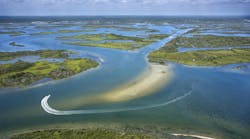Webinar Q&A: The Healthy Waters Plan: Pathways forward to Vancouver BC's water future
In June, Stormwater Solutions hosted a webinar entitled “The Healthy Waters Plan: Pathways Forward for Vancouver BC’s Water Future.” The City of Vancouver, British Columbia, has been separating sewers since the 1970s to reduce combined sewer overflows and comply with its Liquid Waste Management Plan. Looking ahead, the city and its partners recently launched the Healthy Waters Plan (HWP) to address population growth, climate change impacts, and improve stormwater quality using green and grey infrastructure. Session participants will learn about Vancouver’s innovative engagement and planning process to integrate community values, technical data and structured decision-making to shape future investments. The approach and learnings are applicable to help address stormwater challenges and opportunities faced by cities across the U.S.
The project aligned different perspectives and gained agreement on a pathway forward that optimizes infrastructure investments to reduce overflows and flooding and improve stormwater quality while addressing climate-related changes, population growth and reconciliation with First Nations. This case study session will share technical findings and the innovative engagement processes used in this plan that other stormwater leaders and U.S. communities can consider.
Below, webinar speaker Rosey Jencks, vice president and Stormwater and Green Infrastructure National Specialty Lead at Brown and Caldwell, answers common audience questions.
Watch the webinar on-demand here.
Audience: “Why do you separate rain gardens and bioretention? I thought they are the same thing and function the same way.”
Rosey Jencks: “I generally use them interchangeably. Some people distinguish a more engineered system with an overflow and/or underdrain to be bioretention and a rain garden being more of a planted depression, but they are generally planted areas that receive and infiltrate runoff.”
Audience: “Where there concerns about daylighting reaches prior to realizing some gains in storm water quality improvement by other means?”
RJ: This question needs a bit more specificity to answer. Is this referring to achieving water quality goals from a regulatory or physical perspective? I think that there may be two ways of looking at this. 1) If you are using the daylighting as a way of keeping stormwater flows out of the sewer, there are precedents in Zurich, Switzerland which have opened drainage channels on the surface to intercept flows from the sewer. It is a form of upstream sewer separation. There likely needs to be a water quality measure added to the design so you are not increasing polluted stormwater discharges. 2) This is different from creek daylighting for a habitat restoration perspective. There are salmon-bearing streams in Vancouver, and the goals for that would likely be less about water quality and more about habitat value, temperature, and channel design.
Audience: “What is Creek daylighting?”
RJ: Creek daylighting is the process of uncovering and restoring a previously buried or culverted stream to a more natural, open-air condition. This practice is part of urban ecological restoration and is often used to improve stormwater management, enhance biodiversity, and reconnect communities with natural waterways. Here is a good resource: GP Daylighting FAQ, 040910.indd.”
Audience: “What do mean by blue-green roof”
RJ: A blue-green roof is an innovative type of roofing system that combines the benefits of green roofs (vegetated roofs) and blue roofs (water retention roofs). It is designed to manage stormwater sustainably while providing ecological and thermal benefits. Rainwater lands on the roof and is absorbed by the vegetation and soil. Excess water drains into the blue roof layer below.
Q: Is the harvested rainwater from the blue-green roof to be fed into the rain garden, retention basin or used?
A: We modeled this in a mass balance model with the roof area and ground surface separate, so one route the roof area to green roofs and ground surface to surface GI. Discharge is routed to the collection system depending on the lateral status in GIS.


